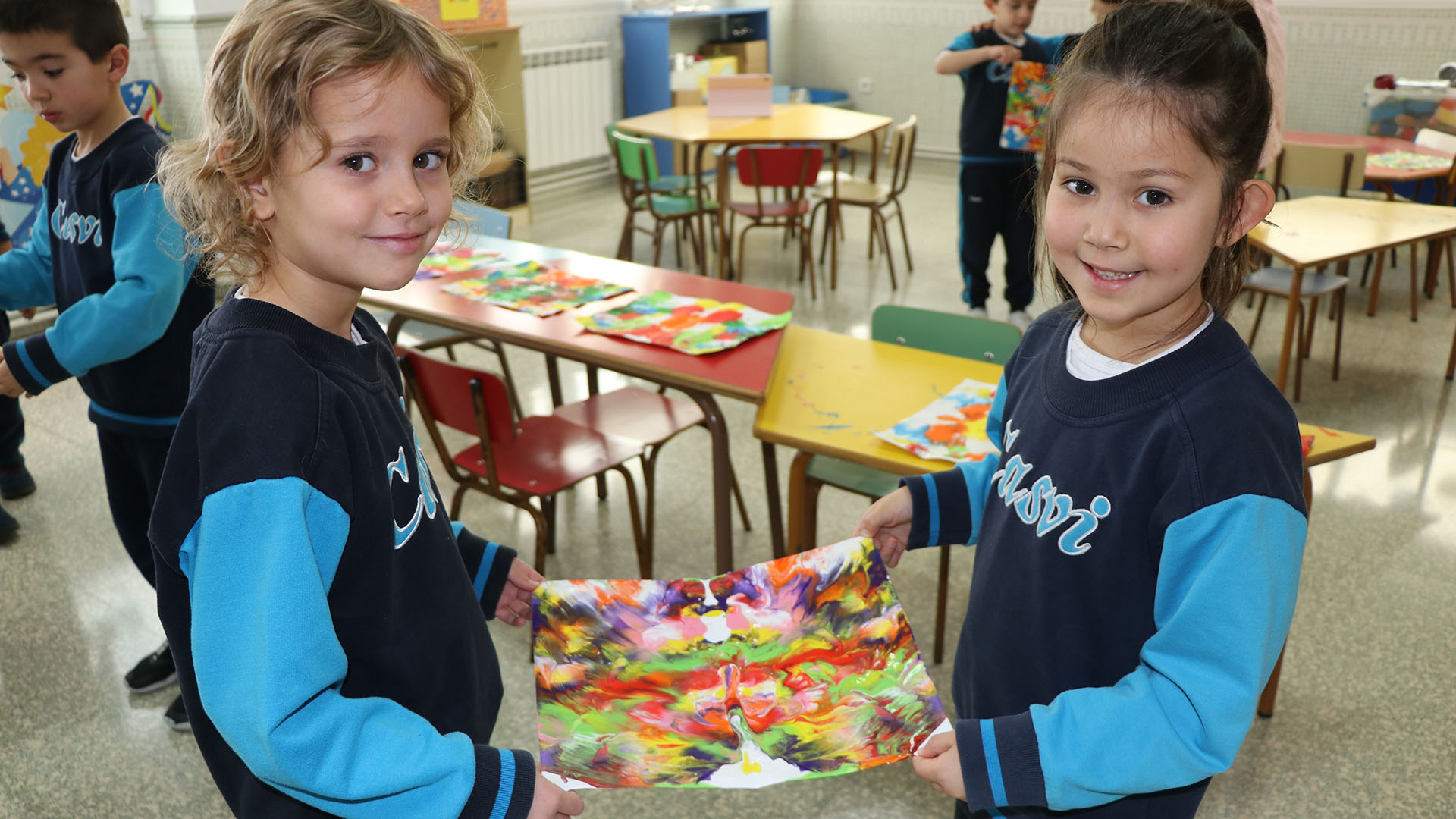Creative thinking is an essential skill in the educational process. In an ever-changing world, where innovation and adaptability are crucial, fostering creativity becomes a priority. This article explores the relevance of creative thinking in the school environment and presents the key issues that will be addressed throughout the text.
Our aim is to take an in-depth look at the development of creative thinking at school. To do so, we will examine the pain points related to this skill. We will provide practical advice on how to stimulate it. And we will highlight the importance of its implementation in the International Private School Eurocolegio Casvi, a reference in international education with the International Baccalaureate methodology.
WHY IS IT IMPORTANT TO DEVELOP CREATIVE THINKING AT SCHOOL?
PREPARING FOR THE FUTURE
The labour market is constantly evolving. The jobs that will exist in the future have not yet been conceived. For that reason, our children need to be prepared to face unfamiliar challenges. Constant adaptation is the key to survival in a rapidly changing world. Creative thinking will enable them to find innovative and flexible solutions as new opportunities and obstacles arise.
GLOBAL COMPETITIVENESS
In an increasingly interconnected world, creative thinking becomes a key differentiator. Companies are looking for employees who not only have technical skills, but also the ability to think outside the box and adapt to different contexts. Creativity does not only apply to the workplace, but also to everyday life. From devising a marketing strategy to solving a personal problem, creativity helps us stand out and thrive in a globalised environment.
SOLVING COMPLEX PROBLEMS
Creativity is a powerful tool for tackling everyday challenges. From solving technical problems to finding more efficient ways to accomplish tasks, creative thinking allows us to explore multiple perspectives and find out-of-the-ordinary solutions. For example, in the school environment, students can apply their creativity to design projects, resolve conflicts between peers or come up with ideas to improve the educational experience.
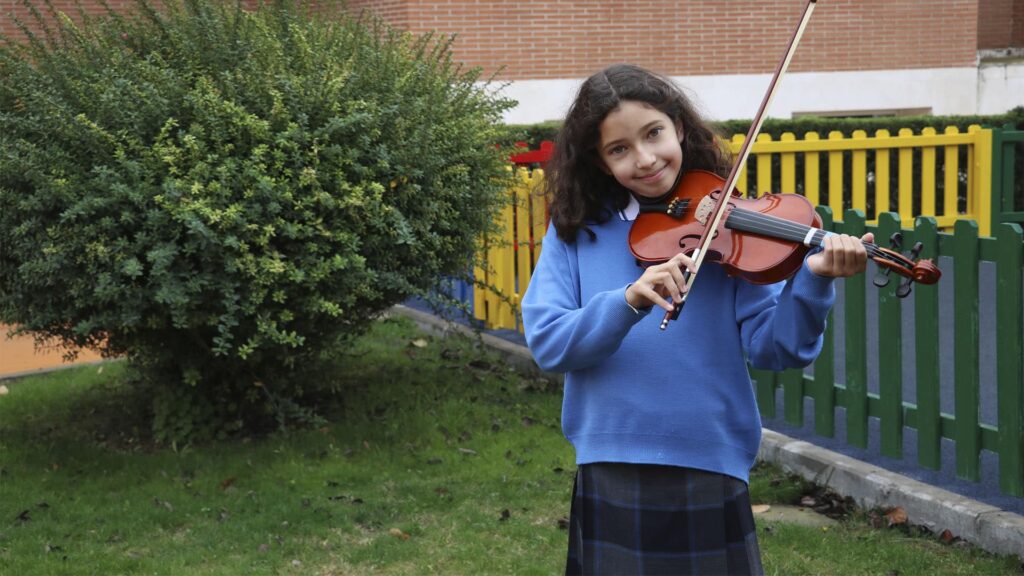
THE IMPORTANCE OF CREATIVE THINKING
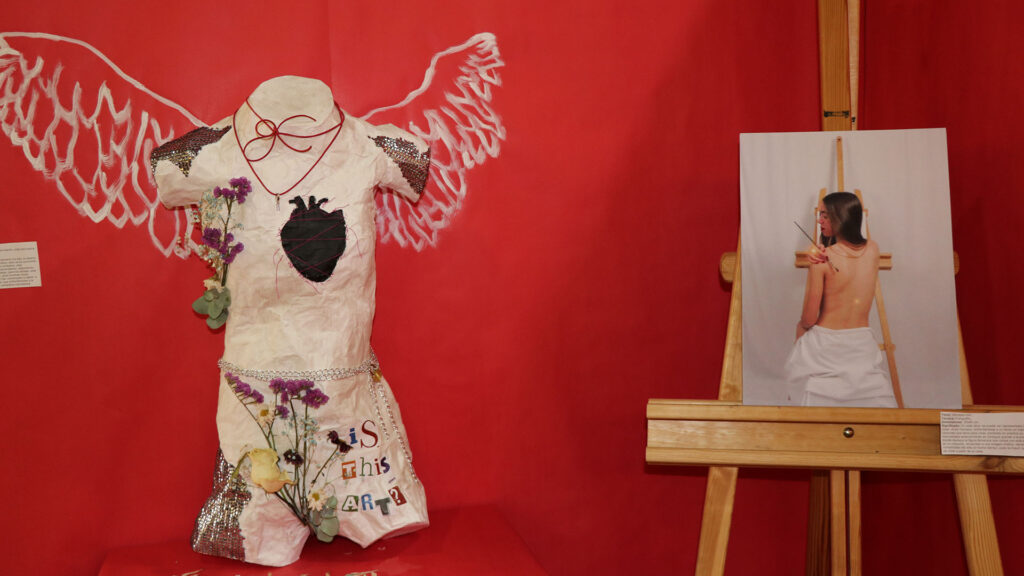
In the 21st century, creative thinking emerges as an essential skill to address the challenges of a globalised and unpredictable world. Why is it crucial to promote it in education? Below, I present arguments backed up by statistics, expert opinions and concrete examples:
REVEALING STATISTICS
According to the OECD, schools must prepare students for jobs not yet conceived, technologies not yet invented and social problems not yet known. Creative thinking is the key to facing the unknown.
The World Economic Forum warns that more than 60 per cent of children in school will end up working in jobs that do not yet exist. Creativity will enable them to adapt to this changing landscape.
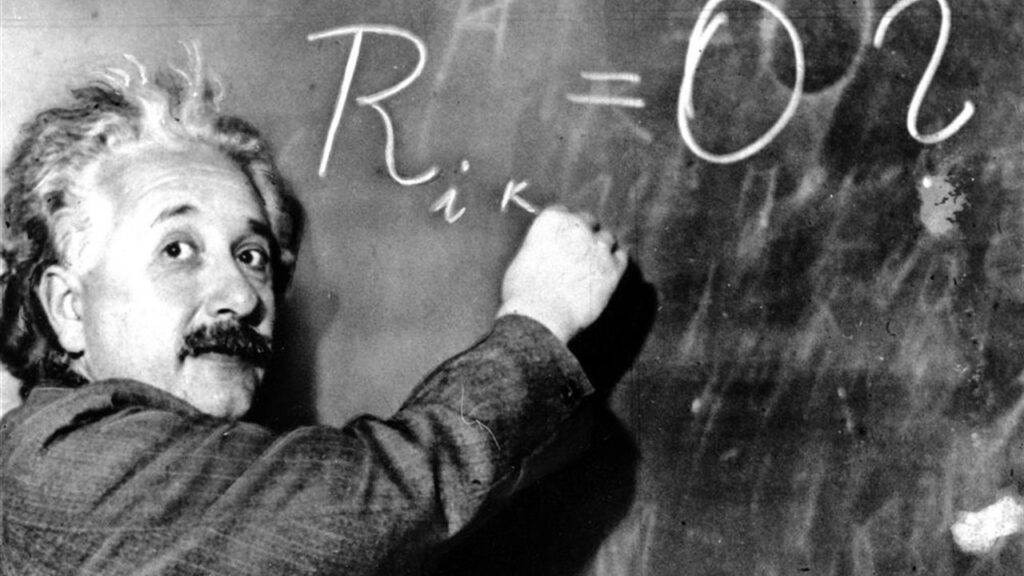
EXPERT OPINIONS
Albert Einstein: "Creativity is intelligence having fun".
This iconic quote by Albert Einstein encapsulates the essence of creativity. Let’s see what it means:
- Intelligence having fun: Einstein suggests that creativity is not a rigid or serious process, but rather a playful expression of our intelligence. When we have fun, our minds are open, unrestricted and ready to explore new ideas.
- Creativity as Play: The analogy with play is a powerful one. Like children playing without worries, creativity allows us to experiment, to combine unusual concepts and to find surprising solutions.
- Intelligence in Action: Creativity is not just an artistic trait; it is a manifestation of our intelligence in action. When we create, we apply our knowledge and skills in innovative ways.
Ken Robinson: "Creativity is as important in education as literacy".
Ken Robinson, a leading education expert, argues that creative thinking should be at the heart of the education system. Here is the analysis:
- Equivalence with Literacy: Robinson compares creativity with literacy, suggesting that both are fundamental skills. Just as reading and writing are essential for communication, creativity is essential for problem solving, innovation and adaptation.
- Preparing for a Changing World: In a constantly evolving world, creativity allows us to face unforeseen challenges. It’s not just about painting or composing music, but about thinking outside the box in any context.
- Transformative Education: Robinson advocates an educational approach that encourages creativity rather than stifling it. Classrooms should be spaces where students can explore, question and create.
“Creativity is intelligence having fun”.
Albert Einstein
TYPES OF CREATIVE THINKING: EXPLORING THE ROUTES OF IMAGINATION
Creativity is not a single path; it is a labyrinth of possibilities. Here, we will break down different types of creative thinking and how they influence our ability to solve problems, innovate and bring new ideas to life:
1. ANALOGUE CREATIVITY
Analogue creativity is like a bridge between two seemingly distant worlds. This is the essence of it:
This is the essence of it:
In this approach, connections are made between seemingly unrelated concepts. For example, in solving a design problem, we might compare it to the structure of a natural ecosystem. This analogy allows us to see the problem from a fresh perspective and find unexpected solutions.
Solving problems through comparisons
Analogue creativity allows us to apply successful solutions from one domain to another. Just as an engineer can be inspired by the way birds build nests to design more efficient structures, so too can we apply principles from one field to another.
2. BISOCIATIVE CREATIVITY
Bisociative creativity is like merging two primary colours to create a new one. Let’s see how it works:
Combination of crazy ideas
Here, we take two seemingly opposing or unrelated ideas and conflate them. For example, a chef might combine French culinary techniques with traditional Indian ingredients to create a unique dish.
Ground-breaking results
Magic happens when these disparate ideas meet. Bisociative creative thinking leads to surprising and original results. It is as if we are creating a new colour in the spectrum of imagination.
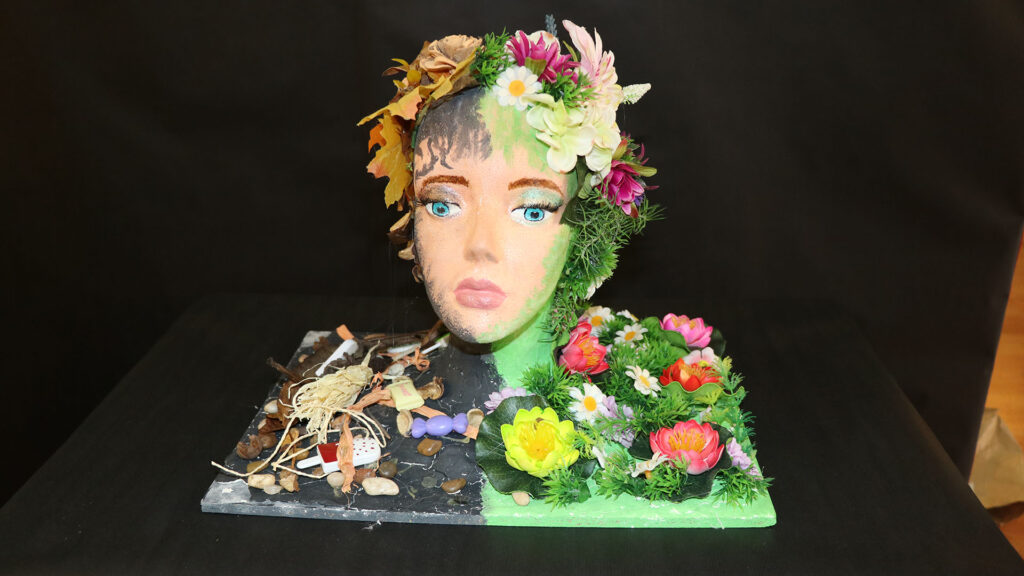
3. INTUITIVE CREATIVITY
Intuitive creativity is like a sudden spark in the dark. This is the essence of it:
- Sudden inspiration: Sometimes the best ideas come without warning. Intuitive creativity is based on intuition and connection to something beyond the conscious mind. It is like receiving a gift from the universe.
- Listening to the inner voice: Intuitive creativity requires us to be open and receptive. Often, the answers are within us; we just need to tune into that inner frequency.
4. MIMETIC CREATIVITY
Mimetic creativity is like a chameleon that adapts to its environment. This is the essence of it:
- Imitate and Adapt: Instead of reinventing the wheel, mimetic creativity is based on observing and adapting. We take existing ideas and give them a unique twist. For example, a fashion designer might be inspired by Gothic architecture to create an avant-garde collection.
- Innovation through assimilation: Mimetic creativity is not blind copying; it is intelligent reinterpretation. We learn from the masters and then create our own version.
5. NARRATIVE CREATIVITY
Creative narrative thinking is like weaving threads of words into a magical story. This is the essence of it:
- Build imaginative scenarios: Narrative creativity allows us to invent worlds, characters and situations. It’s like being the author of your own novel.
- Explore possibilities: Through narrative, we can explore different realities and see how they develop. What if stars were gateways to other universes? What if the trees had secrets whispered by the wind?
TIPS FOR ENCOURAGING CREATIVE THINKING IN OUR CHILDREN
Creative thinking is an essential skill that can make a difference in our children’s lives. From problem solving to artistic expression, creativity drives progress and innovation. We will then explore various strategies to promote creative thinking in children, focusing on the importance of curiosity, diversity of experience, imagination, free play and inspiration from experts in the field.
PROMOTING CURIOSITY
Curiosity is the engine that drives creative thinking. Curiosity is the engine that drives creative thinking. Here are some strategies for cultivating curiosity in your children:
- Encourages Questioning. Encourage your children to constantly ask questions. Curiosity stems from the search for answers. Answer their questions in an encouraging way and promote an environment where they feel safe to express their curiosity.
- Exploration and Discovery. Provide opportunities for your children to explore their environment. Visiting museums, nature parks and historical sites can stimulate their curiosity and open their minds to new ideas and perspectives.
- Experimentation. Let them experiment with different materials and activities. Creativity flourishes when new things are tried and mistakes are allowed. Support your children in their experiments and encourage them to learn from their experiences, both positive and negative.
TO STIMULATE THE DIVERSITY OF EXPERIENCES
Creativity thrives on variety. Exposing your children to a wide range of experiences helps them develop an open and flexible mind. Here are some ways to stimulate diverse experiences:
- Travel and Cultures. Travelling and exposing your children to different cultures broadens their horizons and allows them to see the world from different perspectives. Plan family trips to new and exciting places, where they can experience new cultures, traditions and ways of life.
- Arts and Sciences. It fosters appreciation for the visual arts, music, dance and literature. Creativity feeds on artistic inspiration. Take your children to concerts, art exhibitions and theatre performances to inspire their creativity and spark their imagination.
- Scientific Experimentation. Doing science experiments at home or at school allows them to discover the world from a scientific perspective. Provide your children with science books, experiment kits and online resources so they can explore science concepts in a fun, hands-on way.
FOSTERING THE IMAGINATION
Imagination is the seed of creative thinking. Stimulating your children’s imagination helps them develop abstract thinking skills and allows them to think outside the box. Here are ways to stimulate the imagination:
- Reading. Read stories, novels and poetry with your children. Literature awakens the imagination and allows them to travel to unknown worlds. Make reading a daily habit and encourage them to imagine and create their own stories.
- Role-playing games: Playing different characters or situations encourages creativity and abstract thinking. It provides costumes, props and scenarios so that your children can immerse themselves in the world of fantasy and explore new identities and experiences.
support free play
Unrestricted play is a breeding ground for creativity. Give your children time and space to play freely, without the pressure to comply with external rules or expectations. Here are some ideas:
- Open Spaces. Let them explore parks, gardens and natural spaces. Contact with nature stimulates their imagination and allows them to connect with their environment in an authentic and meaningful way.
- Versatile Materials. Provide materials such as blocks, play dough, paper and paints. Free play with these elements allows unlimited creation and stimulates experimentation and innovation.
CREATIVE THINKING AT THE INTERNATIONAL PUBLIC SCHOOL EUROCOLEGIO CASVI
Eurocolegio Casvi International Private School stands out for its commitment to the integral development of its pupils. Within it, the promotion of creative thinking plays a fundamental role in its educational methodology. Through an innovative approach and personalised attention, the school promotes the development of creative skills and critical thinking among its students.
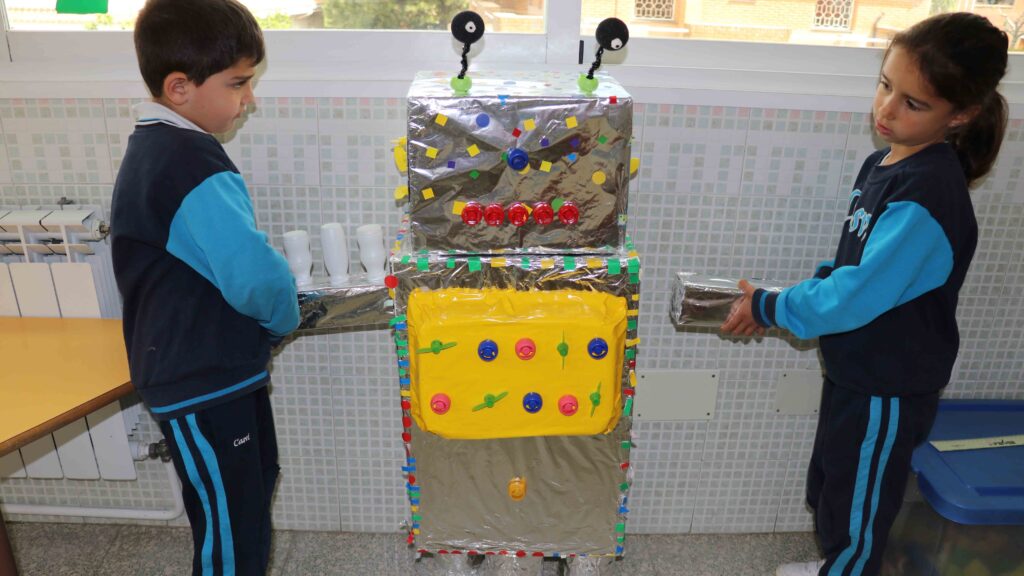
METODOLOGÍA DEL BACHILLERATO INTERNACIONAL
The International Baccalaureate (IB) is an integral part of the curriculum at Eurocolegio Casvi. It is a globally recognised educational programme for its rigorous and holistic approach. At the heart of this programme is the importance of creative thinking, an essential skill for meeting the challenges of the 21st century.
Recall that creative thinking is the ability to generate original ideas, to solve problems in innovative ways and to think flexibly. At the International Baccalaureate, this skill is recognised as fundamental to students’ academic and personal success.
Another major reason why creative thinking is so important in the International Baccalaureate is because it prepares students for the real world. In an increasingly complex and changing world, employers are looking for individuals who can adapt quickly, think creatively and find original solutions to problems.
Moreover, creative thinking fosters curiosity and autonomous learning. Students who are able to think creatively are more likely to explore new ideas, seek innovative solutions and learn more effectively.
Finally, they are encouraged to question established ideas, seek multiple perspectives and think critically about the world around them. This mindset of openness and exploration not only helps them in their studies, but also prepares them to be responsible and engaged global citizens.

CRITICAL AND CREATIVE THINKING APPROACH
The IB programme focuses on the development of critical and creative thinking skills. Students are challenged to question, analyse and generate new ideas in all areas of knowledge. Through interdisciplinary projects and practical activities, creativity and innovative problem solving are encouraged.
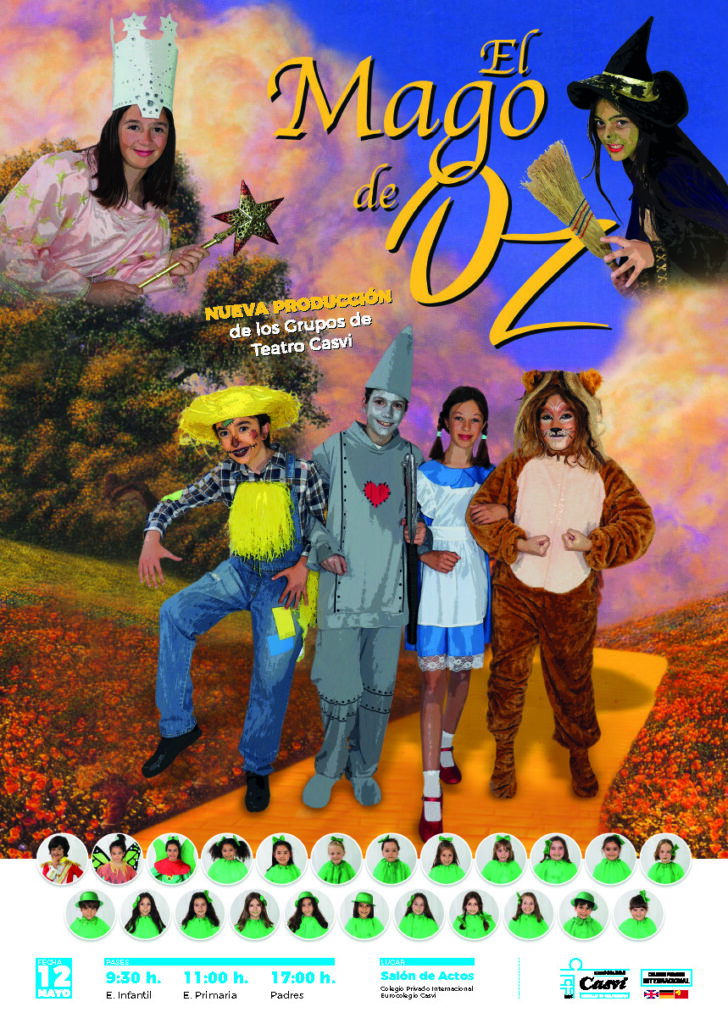
INTEGRATING CREATIVITY INTO THE CURRICULUM
Creativity is integrated into the IB curriculum through various activities and projects. Students have the opportunity to explore their creativity through subjects such as art, music, drama and technology. In addition, creativity is encouraged in all areas of knowledge, from the sciences to the humanities, promoting a holistic approach to learning.
STUDENT RESULTS
The focus on creative thinking at Eurocolegio Casvi has led to exceptional results in its students, both academically and personally. This is the case for students studying Arts in the International Baccalaureate Diploma Programme.
SUCCESS STORIES
Numerous students at Eurocolegio Casvi have achieved success in various areas thanks to their creative thinking. From prizes in art and music competitions to innovative projects in science and technology, students have demonstrated their ability to think outside the box and find creative solutions to problems.
IMPACT ON INTEGRAL DEVELOPMENT
The development of creative thinking has had a significant impact on the overall development of the pupils at Eurocolegio Casvi. In addition to improving their academic performance, creativity has helped them develop communication, teamwork and problem-solving skills. These skills are fundamental to their success in both the educational and professional spheres.
Join us on the journey to a future full of possibilities and discover how Eurocolegio Casvi can help your child reach their full creative potential!

